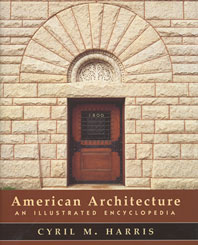Design-build educators talk pedagogy and real politick.
AR: Deciding whether students should participate in design-build earlier or later in their academic careers makes me wonder, more generally, Do any of you consciously try to differentiate your design-build studio from one of your colleague’s?
Lewis: We respond not to other design-build programs but to local conditions—the constraints, obligations, possibilities, and opportunities that exist. Inevitably you learn from the other programs to find out what works and what hasn’t. But the internal logistics of, say, trying to build in New York City helps shape the identity of the program. Geography and institution proclaim the condition more than the comparative method.



Hopfner: I would agree very much with that. To build in New York or to build in the City of New Haven is much different from building in Hale County. And a lot of that is what shapes the program. I certainly am not savvy enough to identify my niche and separate it from other programs.
In Yale’s case, another constraint is that the program is required of all M.Arch students in their first year. We’re dealing with 60 students, they then leave and I lose all my labor.
Badanes: There is probably an issue there, too, with people who are not interested in participating. Especially when your design is not chosen to be built.
Hopfner: That’s certainly the case. We help them self-divide into six teams of 10. One team’s design is chosen to be built. So when five-sixths of the class lose, how do you reinvigorate them? Once the scheme is chosen, we say, That’s the parti and now we’ll really design the thing. We define issues that need to be addressed and have the whole team sink their teeth into the design.
Dutton: Our program got started in a rather interesting way. I was teaching a fourth-year studio and there were three students who didn’t want to do a standard studio thing, who wanted to build something. They pushed me to make contact with my nonprofit connections in the Over-the-Rhine neighborhood. We chose an old apartment to renovate, which didn’t require too much work, and the students took it over, even the fundraising. Everybody was really impressed.
The Miami University is about 50 minutes by car from downtown Cincinnati, so when we started this we would leave Miami at 1 o’clock on Friday afternoon, drive down there, try to get three good hours of building in, and come back. It was the stupidest way of going about it. Again it was the students who said, Tom we’re learning plenty about design-build but we’re really not learning anything about this community. That led to the establishment of the Center for Community Engagement in 2002 and that led to the residency program there, which started fall 2006. Every fall since then we have had students in residence. What we’ve learned from guys like Dan and Andrew is to have architecture students working on these projects full-time.
Louis: It started out here with the computer screen. I was practicing in the mid-’90s and everybody was showing me their fun-with-form-Z portfolios. I couldn’t tell what was going on. That’s when I visited the Rural Studio and Steve—and I tried visiting you, too, Dan—and pieced together a proposal to the University of Utah. The first couple of years I banged my head against the wall: We also began by trying to build something during studio hours, and I proved to school leaders that taking five semesters to build a house really wasn’t going to work. Then they allowed us to go down to the town of Bluff.
Badanes: We build in the standard studio format, but just work smaller in an urban environment—it may not even require a permit, though it’s probably a little easier to do this in Seattle than in New Haven. Maybe that’s where the under-the-radar idea came from. I think it’s possible to provide students with meaningful construction experiences despite the small scale.
AR: Hank Louis organized a project in Africa, and David Lewis has led Parsons students to create a park pavilion in the Catskills town Margaretville. If geography and institution shape your design-build programs, does that identity shift when you work outside your typical places?
Louis: The reason we went to Uganda is that a Ugandan coalition came to see our work and asked us to build a clinic there. Last year we didn’t have a social component to our work, because we had to build more student housing on our little campus in Bluff. I thought Uganda would be a great way to incorporate the social aspect that year. I think we’ll continue to do that, maybe with another professor. It worked out great, because like I said earlier it’s so remarkable to watch the students fall in love with the people they’re helping.
Badanes: All these programs are rooted in a place. I’ve been to India, Cuba, Mexico, Vermont, doing this kind of stuff: You do a project and you raise expectations and then you disappear. So we stopped doing it. I think this idea of thinking globally and acting locally is at the heart of what we do. You don’t see any of these programs going to New Orleans.
Hopfner: That’s exactly how we feel about New Haven. It’s a really depleted housing stock. Certain communities are really underserved. We feel we can do the most good at home.
Rockhill: This year we left home and went to Greensburg, Kansas. It could have been Uganda. The town had been wiped out by tornado.



